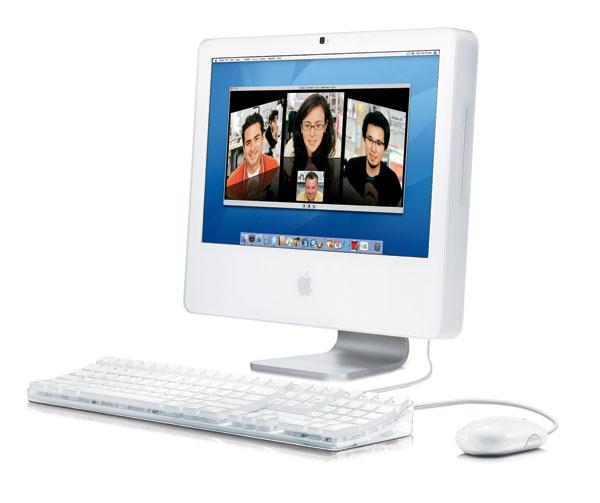A closer look at Apple's educational iMac
For the most part, Apple Computers new educational iMac is a stripped down version of the company's 17-inch consumer offering that ships with a couple of internal component changes but also some outstanding issues, reliable sources tell AppleInsider.
In order to keep the costs of the new computer down, Apple began with a 17-inch iMac Core Duo and began substituting its internals with lower cost components, shaving about $400 off the price of the $1299 consumer model.
In doing so, Apple replaced the 17-inch iMac Core Duo's ATI Radeon X1600 with Intel's integrated GMA 950 graphics chip, its 160GB hard disk with an 80GB model, and the computer's double-layer SuperDrive with a 24x Combo drive.
Apple also stripped the iMac of its Bluetooth wireless technology, deciding not to install Bluetooth antennas inside the computer's chassis. Therefore, the company does not authorize internal Bluetooth installations with the education iMac, forcing customers who require the technology to resort to external USB Bluetooth module solutions.
However, the educational iMac does appears to sport at least one I/O-related enhancement over the consumer model. It packs a combination analog/optical analog audio line-in port rather the consumer model's analog-only line-in jack.
Based on source accounts, the new iMac arrived about two months ahead of expectations. It's clear the move was a strategic one by Apple, aimed at capturing the heart of this year's educational buying frenzy. But in doing so, the company released the computers to manufacturing with a handful of outstanding issues, sources familiar with the matter have said.
Specifically, the first educational iMacs to roll off Apple's assembly lines will fail to sync properly with a television screen if they are booted from a Windows XP partition. According to sources, the iMac incorrectly detects TVs as a VGA displays and there is currently no workaround for the issue.
Also when booting from Windows XP, the iMac registers itself as a portable computer, which invokes power settings options typically reserved for notebooks running on battery. Sources say there is also no present solution to this problem.
Users of the new iMac may also find that Boot Camp fails to install if the included Apple Mighty Mouse is plugged into one of the USB ports at the rear of the computer during installation. A quick workaround is to use another mouse during installation or to connect the Mighty Mouse to the computer through the USB port on the Apple keyboard.
In one final note on the new educational iMac, sources warned that altering the computer's brightness setting in the Display Preferences without adjusting other video settings will corrupt the PRAM. This may cause the iMac to restart at a later date with a blank video screen. The solution is to simply reset the computer's PRAM.
 Kasper Jade
Kasper Jade











 Mike Wuerthele
Mike Wuerthele
 Malcolm Owen
Malcolm Owen
 Chip Loder
Chip Loder

 William Gallagher
William Gallagher
 Christine McKee
Christine McKee
 Michael Stroup
Michael Stroup
 William Gallagher and Mike Wuerthele
William Gallagher and Mike Wuerthele






